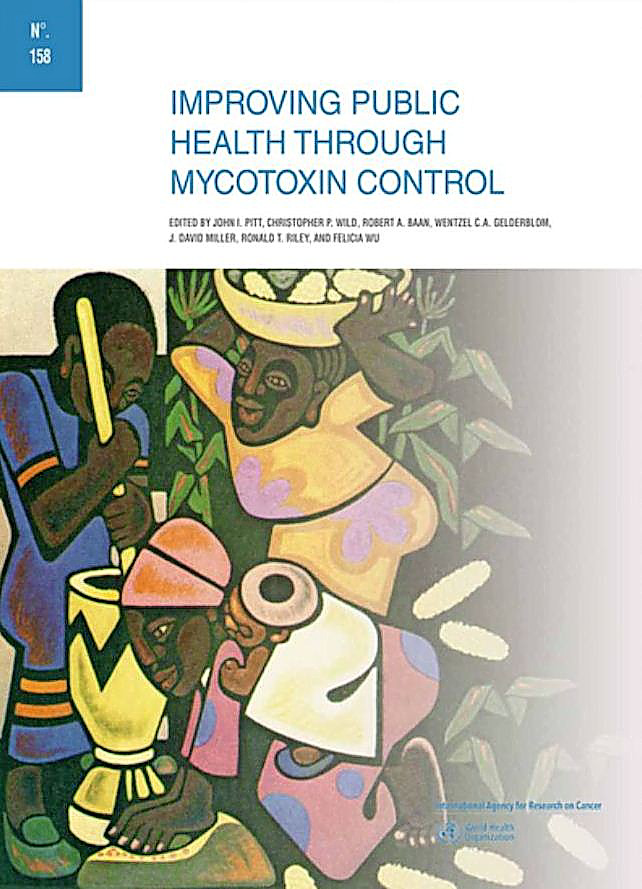WHO launches new publication on mycotoxins

The World Health Organisation’s new book entitled Improving Public Health Through Mycotoxin Control, aims to sensitise the international community to the mycotoxin problem, useful to decision-makers across a broad spectrum of disciplines, including agriculture, public health, marketing, and economics. It is not just a scientific description of the occurrence and effects of mycotoxins but also outlines approaches to reduce mycotoxin exposure and improve public health.
In contrast to high-income countries where control of mycotoxins is well established, the situation in low-income countries is often different: subsistence or small-scale farmers produce foods for local consumption that may be heavily contaminated with mycotoxins. Contaminated commodities may also be exported from high-income countries to those where regulations either are not in place or are ineffective or unenforced. In low-income countries, exposure to mycotoxins at high levels is often closely associated with inequality and poverty. Therefore, affordable and feasible solutions should be a part of the international development agenda.
Effects in livestock animals
Animals suffer adverse effects from consuming mycotoxin contaminated feeds, and these in turn may pose problems to consumers who rely on the animals for food. Several indices can be used to associate animal diseases through awareness of the outward adverse signs typical of exposure to a given mycotoxin. As well as the direct effect in animals, mycotoxicoses in domestic animals can be a warning sign of a risk of high-level contamination of foods for human consumption.
Aflatoxins can cause acute toxicity in many species, most notably evident in outbreaks of poultry poisoning. In addition, chronic exposure leads, among other effects, to reduced weight gain, decreased egg production, impaired immunity, and altered susceptibility to infectious agents.
Fumonisins were first identified through the occurrence of equine leukoencephalomalacia and, later, the occurrence of porcine pulmonary oedema. The main target organ of ochratoxin A is the kidney, and nephropathy is accompanied by renal dysfunction and oedema; this is most common in pigs but has also been reported in horses. Ochratoxicosis in poultry is associated with feed refusal and high mortality. Deoxynivalenol can provoke feed refusal, e.g. in cattle, pigs, and chickens, and pigs are particularly sensitive; high intakes are also associated with emesis. Zearalenone causes a variety of reproductive problems as a consequence of estrogenism.
Reducing exposure to mycotoxins
Approaches to minimise mycotoxin levels in food are varied, encompassing good agricultural and manufacturing practices as well as at the household or individual level. The key is the evaluation and adaptation of these approaches into cost-effective, simple, and sustainable intervention methods, predominantly at the population level, suitable for low-income countries.
Possible solutions in the book looked at the pros and cons which include; changing or varying diets to reduce the absolute quantity of contaminated food; using dietary interventions that either reduce mycotoxin bioavailability or modulate metabolism in ways that reduce the harmful effects of ingested toxins; genetic modification of crops to reduce insect damage or enhance fungal resistance; post-harvest interventions include the removal of infected and/or insect-damaged food components by hand sorting, preferably combined with correct drying and storage conditions, which avoid fungal proliferation and toxin production; and, chemical deactivation via nixtamalisation in the food processing.
Overall, it is important, through education, to improve awareness of the problems of mycotoxin contamination of foods and to promote the potential solutions within different sectors of society, including householders, farmers, and traders as well as governments and non-governmental and international organisations.
Join 26,000+ subscribers
Subscribe to our newsletter to stay updated about all the need-to-know content in the feed sector, three times a week. Beheer
Beheer









 WP Admin
WP Admin  Bewerk bericht
Bewerk bericht